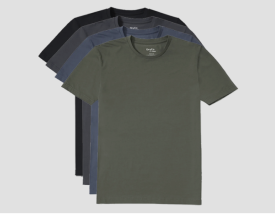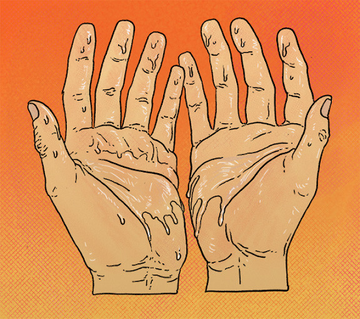What is the HDSS?
The Hyperhidrosis Disease Severity Scale (HDSS) is a qualitative diagnostic tool that measures the impact that hyperhidrosis has on your daily life. It is a self-assessment based on a four-point scale. A one indicates minimal impact on your daily life, a four indicates severe hyperhidrosis.
The goal of any treatment is to move you to a lower HDSS score.
The four points on the HDSS scale ask you to select one of four statements.
“My sweating is…”
- ...never noticeable and never interferes with my daily activities.
- ...tolerable but sometimes interferes with my daily activities.
- ...barely tolerable and frequently interferes with my daily activities.
- ...intolerable and always interferes with my daily activities.
How the Scale is Used
Your doctor asks you to select the statement that best describes your relationship with hyperhidrosis. It is a self-assessment, like the hyperhidrosis checklist questionnaire, but the four-point scale helps to simplify assessments.
The initial assessment helps the doctor understand how severe your condition is. This is a good place for them to start in determining which treatments are most appropriate for you. For example, treatments with side effects may be suitable for someone with a level three or four HDSS score. For a person at level one, however, side effects could easily be as bad or worse than the disease itself.
The HDSS is also a great way for doctors to set a benchmark for treatment. Not only can it be used to help determine what hyperhidrosis management techniques to use, but it can also determine how effective a treatment is.
After treatment has begun, and/or, after it has been completed, the doctor may ask you to test your HDSS score again. Comparing the new score against the old helps to measure improvement and determine whether or not this treatment is working, or if a new approach is necessary.
If the treatment is effective, they may test you again on your next visit. This can help them see whether the treatment effects have had a lasting impact. The results can help inform treatments for you and others.
Gathering HDSS data is a great way to improve hyperhidrosis management techniques and treatments for everyone.
Is it Accurate?
Self-assessments are easily critiqued as they are a less measurable metric. However, the Hyperhidrosis Disease Severity Scale does seem to provide accurate results. The HDSS results correlate well with other hyperhidrosis measurements that examine the impact on quality of life.
The Hyperhidrosis Impact Questionnaire (HHIQ) and the Dermatology Quality of Life Index (DLQI) both match up with the self-assessed HDSS results. Even gravimetric sweat measurements showed the results to be accurate. In short, the HDSS appears to be both quantitatively and qualitatively accurate.
The Journal of the American Academy of Dermatology (JAAD) has even identified the scale as having, “acceptable validity, reliability, and responsiveness.”
This tool is a good measurement for determining a patient’s need for treatment, as well as monitoring the results of said treatment.
Hyperhidrosis Undershirts and T-Shirts & the HDSS
The right clothes may not be a cure, but they are one of the most impactful ways to manage hyperhidrosis without resorting to drugs or surgery.
For those with a low score on the Hyperhidrosis Diseases Severity Scales, sweat-wicking clothing may be sufficient to manage symptoms on their own. Even those suffering from level three or four hyperhidrosis may find major benefits by combining moisture-wicking undershirts with their other treatments.
This hyperhidrosis clothing helps to reduce sweat production, as well as quickly and discreetly wicking sweat away before it can set in, causing stains and odors. At Neat, we used advanced fabric technology to blend maximum comfort with high-grade efficiency. Shop the best hyperhidrosis undershirts and t-shirts.







